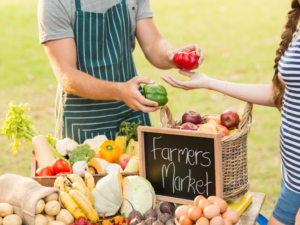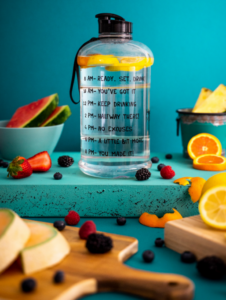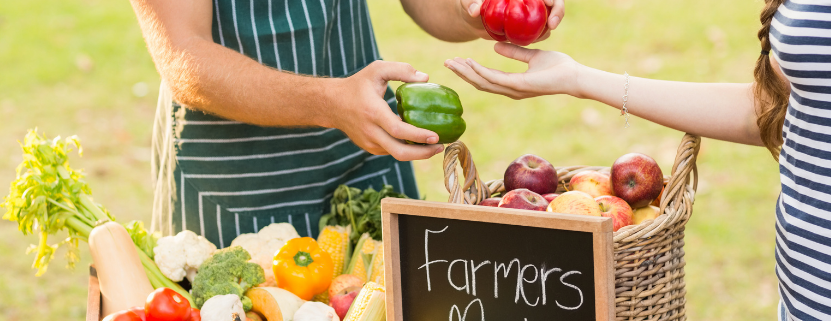Food Waste & You!
Three Easy Ways to Reduce Food Waste and Improve Nutrition
Between National Arbor Day and National Gardening Day, April is a month of celebration for all that our beautiful earth provides. This, of course, includes one of the most precious resources that we happen to enjoy every day – food! Try the 3 strategies below to power the planet and your body at the same time.
Number 1: Shop Smart

One of the biggest mistakes we make when it comes to food waste and good nutrition is buying more than we can use in one week. When planning ahead, a practical approach is to plan one week at a time, with an emphasis on seasonal, local options. Keep in mind that fresh produce and meat stay fresh for about 3-5 days on average. Knowing this, a good strategy is to be sure to include a mix of fresh, frozen, and, believe it or not, even canned goods in your meal plan. Next time you are planning, try this –
- Focus on 2-3 fresh, seasonal fruits and vegetables each week and try to think of ways to include these in multiple recipes. Oh, and avoid shopping on an empty stomach!
- Contribute to a greener and healthier environment over time by reducing your carbon footprint. When we buy locally we are reducing the travel time for those wonderful fruits, vegetables, dairy, and even meat that often comes from across state lines. By doing this, we are enjoying fresh, crisp goods while reducing CO2 emissions which in turn helps support a healthy food supply for decades to come.
- When it comes to health and packaged goods is to always look for items that are low in added sugar and salt. This small change can help those managing their cardiovascular health, diabetes, high blood pressure, bone health, and much more and still feel good about their environmental impact. On the flip side, make sure to recycle aluminum and glass when you can to help reduce the impact on our landfills and ecosystem.
- Like our canned goods, when it comes to frozen foods we want to look for items that are not pre-seasoned or flavored. Seasonings and flavors tell us that there has likely been salt, sugar or even preservatives added. By doing this, we can then add unique flavors to make it work with whatever dish is on the menu. Way more fun!
- Bonus – frozen goods are great for those cooking for one because you can easily get one serving out and then pop the rest back in the freezer for next time.
The truth is, there are many healthy options when it comes to packaged and fresh foods – and staying informed is one way to help meet your health and environmental goals.
Number 2: Proper Food Storage
Americans discard more food than any other country, nearly 40 million tons — or 30-40 percent of the entire US food supply. So what can you do?
- Follow FIFO! If this term is new to you, it stands for “First-In, First-Out” and refers to a food storage method that is used for both sanitation purposes and food waste reduction. What it means is that as you are putting away the groceries make sure to put them away in an order that allows you to use the oldest items first. For example, yogurt in the refrigerator is one of those that inevitably end up spoiled in the back of the fridge. If we are intentional in placing the newest yogurt behind the old one, it will remind us to use the olde
 st first. I know it’s tempting to grab the freshest one however when it comes to food waste we’re doing ourselves a disservice for minimal flavor difference.
st first. I know it’s tempting to grab the freshest one however when it comes to food waste we’re doing ourselves a disservice for minimal flavor difference. - Preserve foods by keeping your leafy green in an airtight container with a dry paper towel. This will help absorb the moisture and keep the item fresher longer.
- Another idea is to keep items like celery in the refrigerator with a small amount of water around the root which will keep the leaves thriving and fresh longer.
- When it comes to fruit, try not to cut this too far in advance which will help it from turning mushy before you’re ready to enjoy it.
- Use eco-friendly glass, plastic and other items like re-usable storage bags for both improved freshness, financial savings, and concerning nutrition – reduced intake of potential carcinogens.
- Use reusable drink holders more often and reduce bottle water intake. This will help to make keeping up with daily water intake fun and even motivating.
Number 3: Use EVERYTHING!
For many, the idea of eating leftovers is nothing short of boring. However, we know that with a high rate of food waste here in the United States an easy change like including 1 to 2 leftover meals per week can have a big impact. But who wants to eat the same thing twice in a row? Me either! Instead, try “re-inventing” it into something completely new and exciting!
- Keep leftover meat and vegetables for a quick stew or chili.
- If vegetables like corn, peas, and beans are leftover, try adding to a cold salad the next day for added flavor and texture.
- If you happen to be among those that enjoy leftovers, refrigerating and freezing leftovers in individual serving sizes is one of the best ways to help ensure that always have something nutritious available for those crazy days when cooking goes out the window.
- When it comes to peels and scraps from items like oranges, lemons, limes, try saving for everything from dried seasoning and rubs, salad dressing, vinaigrettes and jam – bring on the phytonutrients!

It is encouraging to know that small changes each day with food purchasing, storage, and enjoyment can work together to support our health and environmental goals. On behalf of Banister Nutrition, thank you for all you are doing to support a healthy, happy world for yourself and others. ~AS



